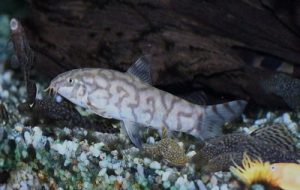

This eel species is also the largest and heaviest. The most popular eel species amongst fishing experts and anglers is the European Conger. They are known to eat almost anything, including insects, snails, crabs, shrimp, clams, and even jellyfish.Įels are found throughout the world, but the largest populations are located in Asia and Africa. They are very active predators and will often hunt down smaller fish and crustaceans. Eels are one of the most popular bottom feeder fish species. The majority of different eels species are bottom feeders.


Some of these fish species also feed in other layers of the ocean. However, not all of the fish in the list below are exclusive bottom feeders. There is a great variety of bottom feeders living in saltwater across the globe. This is the division by saltwater and freshwater bottom feeders. We have chosen to take the easiest classification for anglers and hobby aquarists. As mentioned above, you can categorize this species of fish in a number of different ways. There are several common species of bottom feeder fish. This helps control the sensitive balance of water quality in a lake, pond or even in an aquarium tank. They play a vital role in keeping the bottom of lakes and ponds healthy by eating dead organisms and decaying material. Why Are Bottom Feeder Fish Important For The Environment?īottom feeder fish are an essential part of the ecosystem because they help keep the water environment clean. It is best to look for the average size of your local bottom feeder fish population. Most bottom feeder fish species are relatively small, although some individual feeder fish species, such as catfish, can get slightly larger. Sizeįinally, another way to identify bottom feeder fish is by measuring their length. Omnivorous fish eat a wide range of foods, including plants, worms, mollusks, algae, and decaying matter.ĭetritivores feed mainly on dead plants and animal matter.Īlthough you cannot identify a bottom feeder exclusively based on their prey, it’s good to know that the majority of bottom feeders are detritivores. Their Preyīottom feeder fish species are either omnivores or detritivores (eating dead organisms) or both. Their long tail helps them move around the bottom of a lake and pick up food from the mud. These fish have more rounded bodies with longer tails than flat-bodied bottom feeders. Other types of bottom feeders include the round-bodied ones, which include bass and catfish. This body shape is ideal for eating the soft bodies of invertebrates that live at the bottom. This includes a number of different flatfish species, such as flounders. The bottom feeders that exclusively feed at the bottom of a body of water typically have a flat body shape. For example, flat-body bottom feeders tend to be found near the bottom of a lake, whereas round-bodied bottom feeders prefer to stay in deeper waters. The Body ShapeĪnother way to identify bottom feeders is by examining their body shape. However, the size of teeth for bottom feeder fish species can vary widely depending on whether they are exclusive bottom feeders or they also eat in other layers of the water.
Black bottom feeder fish crack#
The majority of bottom feeders have small, sharp teeth that allow them to crack open the shell of crabs and other crustaceans that live at the bottom of a lake. This mouth shape allows the fish to easily suck up food from the bottom of a lake or pond. If the mouth looks like a sucker, then it is likely to be a bottom feeder. Here are some of the most important signs. There are many ways in which you can tell if a fish is a bottom feeder. You will also find that the majority of exclusive bottom feeder species eat mostly dead organic material when feeding.įor those species that feed from different layers of the water, they eat a variety of foods, including plankton and smaller fish. In addition, there is a second distinction which divides bottom feeders into fish that only eat from the bottom and those species that eat from all layers within the water. This includes snails, crabs, starfish and shellfish. They have small mouths and large stomachs to help them digest their food.īottom feeder fish can be divided into saltwater species, such as eel, flounder and rays, and freshwater fish, such as bass and catfish.ĭespite their name, bottom feeders are not only fish but you will find that the majority of marine animals living at the bottom of a body of water are bottom feeders. What Are Bottom Feeder Fish?īottom feeding fish are those that feed on the bottom of a body of water, such as lakes or ponds. In this ultimate guide on bottom feeder fish, we take a look at what fish species are counted as bottom feeders, and how you can identify them.


 0 kommentar(er)
0 kommentar(er)
